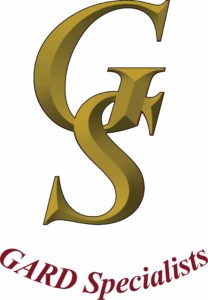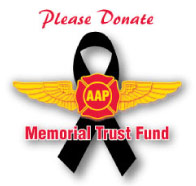Mike Sagely- Senior Pilot and Safety Officer, Los Angeles County Fire Dept. Air Operations
“Night Time Aerial Fire Fighting”
Interview by Tony Morris, “Wings Over Fire”, www.airtanker.org
TM
When was NVG flying first used by LACoFD Air Ops pilots? What generation NVG was used?
MS 1976. They were using the PVS-5 full faced goggle system which is considered generation II. It was originally designed to be used for driving vehicles at night
TM
How and where do LACoFD Air Ops pilots receive special training in the use of NVG for night aerial firefighting?
MS We don’t. Our pilots have all been qualified through an FAA approved Night Vision Goggle course or have been trained in the military. Our pilots generally have a very extensive fire flying background so it then becomes utilizing a tool (NVG’s) to safely clear an area for obstacles. You can’t effectively teach exactly how to use the NVG’s on a fire- each incident is different. You can however practice flying in mountainous terrain and dropping water on fixed targets. The key missing component is of course the effect the actual fire has on the performance of the goggles. If you are a proficient goggle pilot and have experience on fire tactics the transition is generally fairly easy.
TM
LACoFD Air Ops will have new Infinity NVG provided by a grant from the Dept. of Homeland Security. What is special about the Infinity NVG?
MS The Infinity goggle is the next improvement in technology and manufacturing. Field of view and visual acuity are the two elements that have been at the forefront of NVG improvement. Field of view that is limited to 40 degrees for an aviator imaging system is a difficult hurdle and has been in development for many years. Visual acuity has gradually been approaching 20/20. This is a significant improvement over 20/40 from the Generation III ANVIS 6 system first used by the military. The Infinity has an improved signal to noise gain that roughly translates to clarity which allows them to approach 20/20 visual acuity when focused properly.
TM
During night fire fighting operations who determines if NVG should be used? Is it the individual pilot’s decision?
MS In the end everything our pilots are asked to do will be decided by the pilot in command. The NVG’s are a tool and each pilot has the authority to determine how they will be utilized during night firefighting. Sometimes depending on the conditions the NVG’s can actually elevate the risk. Because they amplify ambient light produced by the fire it can produce conditions that make the NVG’s unusable and actually hinder the pilot’s ability to safely operate. Typically the pilot uses a combination of unaided flight and the NVG’s to maximize safety.
TM
Have LACoFD Air Ops pilots trained with other Southern CA County Fire Departments in the use of NVG?
MS Yes, in the past 3 years there has been a multi-agency night aerial firefighting drill sponsored by Orange County Fire Authority. They do an outstanding job bringing the agencies together demonstrating the complexities of fires utilizing aircraft at night. It allows key leaders to learn about the logistic, operational, and safety concerns associated with night operations. The elevated risk factor cannot be overlooked or underestimated.
TM
Which NVG equipped helicopter company is now under contract to the U.S. Forest Service to fight wildfires?
MS Helicopter Express- was awarded the First NVG contract and it was available for use in the Angeles, Cleveland, San Bernardino, and Los Padres Forrest
TM
Are all helicopter pilots engaged in aerial firefighting required to follow a Protocol developed for the state of California?
MS Depends on who commands the fire. Contract counties such as L.A. County are expected to follow state policies and procedures when Cal Fire has Incident Command. If night aerial firefighting capabilities are requested we follow our own policies and procedures because the state does not authorize its aircraft to operate on fires at night.
TM
As a Senior Pilot with LACoFD Air Ops what is your responsibility?
MS I am a first line supervisor between the pilots and the Air Operations Battalion Chief. I am also the aviation safety officer. We are in the process of developing our SMS system and this has been a challenging task but one that is well worth the effort. A brief description of what I am involved with on a daily basis would be impossible. It ranges from daily staffing to personnel issues, training schedules, heliport improvements, maintenance, the list goes on. I stay busy most of the time.
NVG Presentation, March 19-20, Tangent Link, Aerial Firefighting Conference:
The presentation will give the attendees a complete introduction to the Air Operations section. I discuss the history, mission, equipment, and personnel that are Los Angeles County Air Operations Section and why we are so unique. I will also talk about the aircraft modifications necessary for night flying with NVG’s and the guidelines that have been developed for agencies that intend to establish a NVG program. I finish with a discussion on risk management and a review of the first NVG contract with the Forrest Service.











Speak Your Mind
You must be logged in to post a comment.